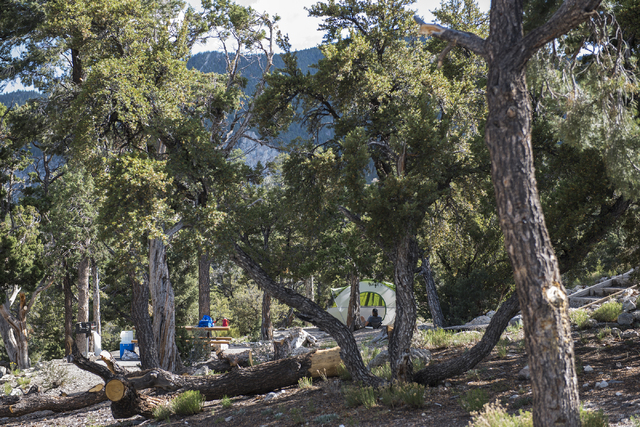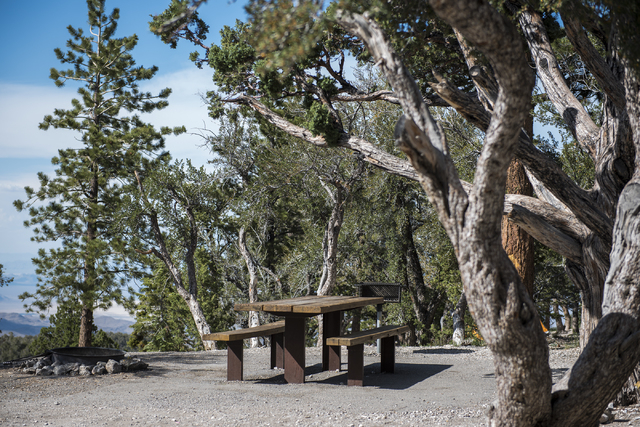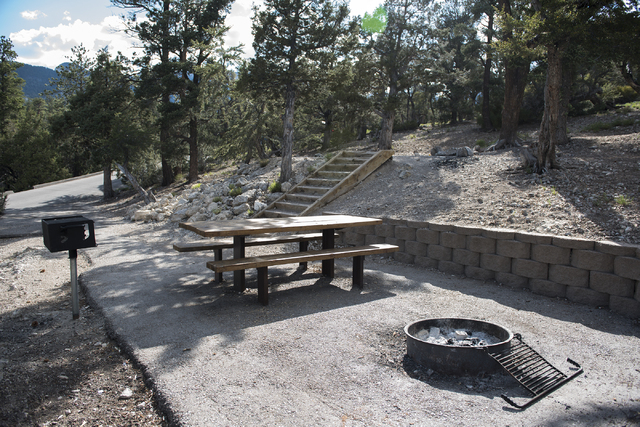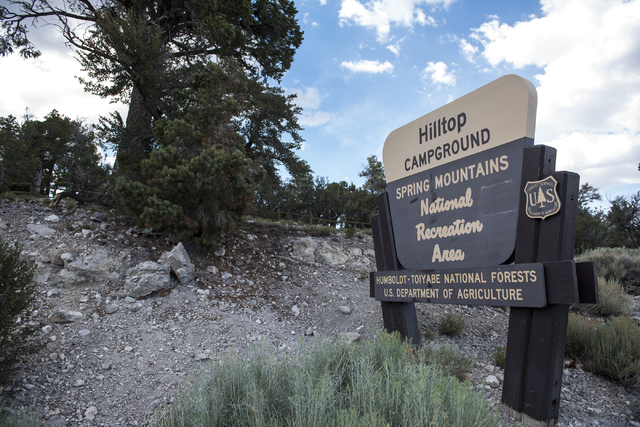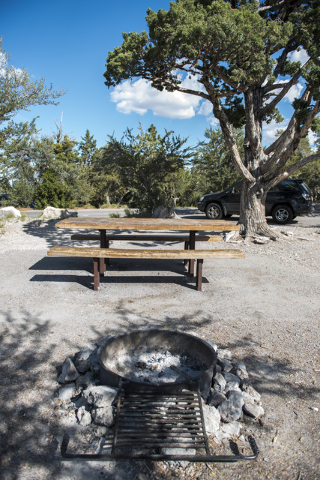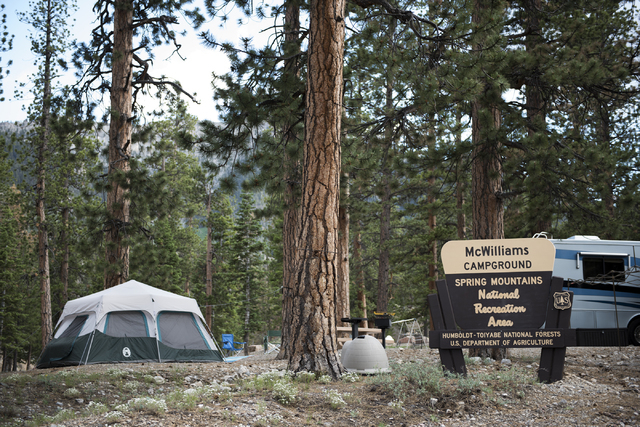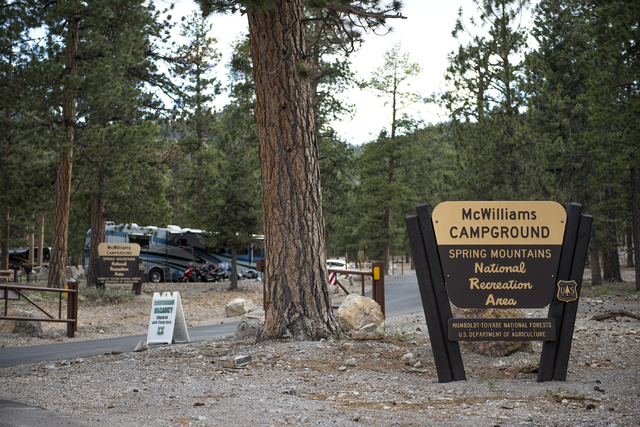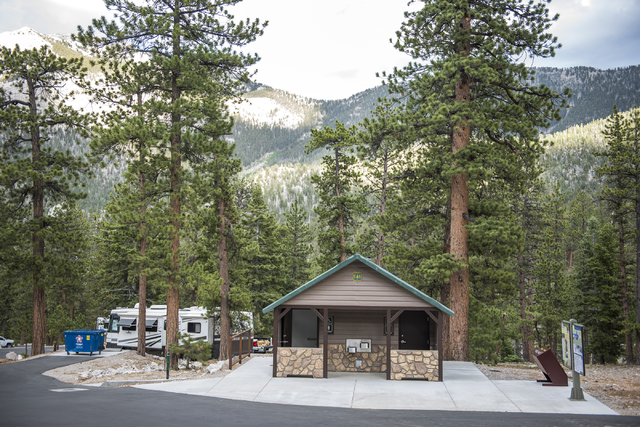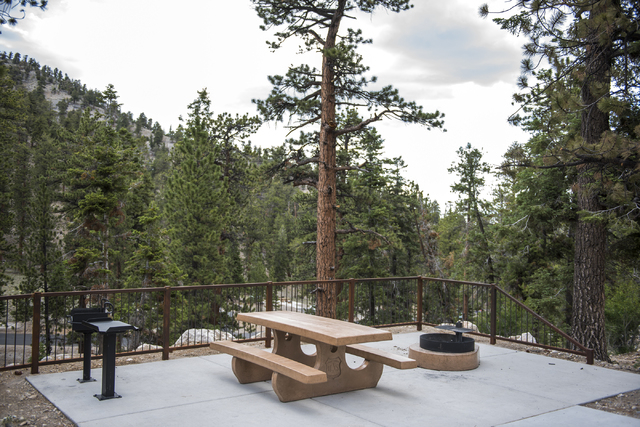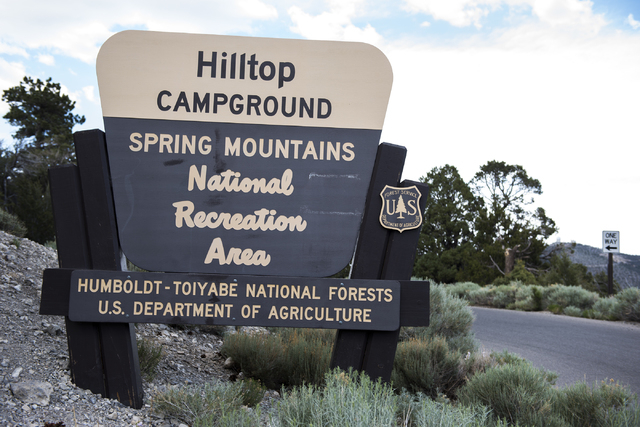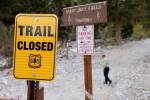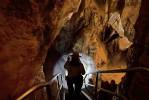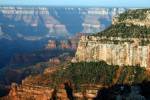After $55M in upgrades, Mount Charleston has fewer camp sites
Unless you’re reading this from a campsite on Mount Charleston right now, you’re probably out of luck.
Spring Mountains National Recreation Area is expected to fill up fast this holiday weekend, and there just aren’t enough developed campsites to go around, despite $55 million in renovations over the past three years.
That effort actually resulted in far less campsites — not more — at the Las Vegas Valley’s favorite place to escape the summer heat.
Though some new campsites were built, the recreation area wound up losing two entire campgrounds as a result of the work that began in 2012 and wrapped up this spring.
The Old Mill and Kyle Canyon picnic areas used to be campgrounds with about 100 spaces between them, according to a Forest Service visitor guide from 2010. Both areas have since been converted to day use only, mostly out of concern about flooding.
The Spring Mountains now has four fee-collecting campgrounds with a total of 129 developed sites, down from seven campgrounds and 219 sites five years ago. The total number of developed picnic sites increased by about 40 as a result of the work.
Del Orme, recreation staff officer for the Spring Mountains, downplayed the reduced number of campsites, noting that demand will always far outstrip supply at such a popular destination so close to a major city.
“It would be wonderful if we had places for everybody who wanted to camp,” Orme said, but there’s simply no way to provide enough developed sites to serve roughly 1.2 million annual visitors, most of whom never venture beyond the busy core areas at the tops of Kyle and Lee canyons.
He added that the Spring Mountains has no shortage of “dispersed camping” available free of charge to people willing to rough it by bringing their own water, packing out all their trash and living without such niceties as picnic tables or restrooms. As long as you’re on public land away from a picnic area, trailhead or day-use parking area, you can pitch a tent most anywhere you like.
This will be the first Fourth of July weekend since the Forest Service finished its first major upgrades in about 40 years at campgrounds, picnic areas and trailheads on the mountain.
Capital projects included construction of the new Spring Mountains Visitor Gateway on the road up Kyle Canyon and the new Desert View Overlook on state Route 158; upgrades to Lovell Canyon Road at the southern edge of the recreation area; and substantial renovations at all but two of the campgrounds and picnic areas on the mountain.
At the campgrounds, for example, “all the sites have been upgraded and improved, and the main improvement was accessibility,” Orme said.
Old wooden tables and fire rings on bare ground were replaced by new tables and raised grills on concrete pads that can accommodate wheelchairs.
The work was paid for through the Southern Nevada Public Land Management Act, a 1998 law that directs profits from federal land auctions in the Las Vegas Valley to schools, parks, water infrastructure, and conservation and recreation projects across the state.
Ron Mobley oversees use of that money in the Spring Mountains as program coordinator for Humboldt-Toiyabe National Forest.
“I’m happy with how it all came out. The mountain has a whole new look and a whole new feel,” he said.
The loss of some campsites in the process was unavoidable, especially in the wake of the 2013 Carpenter 1 fire that scorched 28,000 acres and dramatically increased flood danger on parts of the mountain, Mobley said. The Forest Service is taking a far more cautious approach to the placement of campgrounds in flood zones nationwide after the 2010 flash flood that killed 20 people, seven of them children, at a Forest Service campground in Arkansas.
After the old Kyle Canyon Campground was converted to a day-use picnic area last summer, part of it was washed away. Had people been camped there when that happened, Mobley said, “we would have had huge issues from a public safety standpoint.”
So far, outdoor recreation advocates don’t seem concerned about the loss of developed campsites.
“My impression has been nothing but positive,” said Alan O’Neill, a former superintendent for Lake Mead National Recreation Area who now works as a consultant and champion for trails, public lands and eco-tourism. “This wasn’t just a quick fix. Everything’s been redone. I looked at the Lee Canyon campground, and it’s beautiful.”
He added that budget cuts have made it difficult for federal land management agencies to maintain the facilities they have, let alone renovate or expand them.
“I haven’t seen a new forest campground (anywhere) in a long time. We’re lucky to have them,” O’Neill said.
Orme said there is talk of some day adding campsites near the new Visitor Gateway, but there are no immediate plans to build or expand campgrounds on the mountain.
“This is what we’re going to have for a while,” he said.
In other words, don’t be surprised if you can’t find an open campsite or picnic table on Mount Charleston this Fourth of July.
“We expect it to be very busy,” Mobley said. “Come early.”
Contact Henry Brean at hbrean@reviewjournal.com or 702-383-0350. Find him on Twitter: @RefriedBrean
A FLAME-FREE FOURTH
If you celebrate Independence Day at Mount Charleston, leave your firewood, charcoal and blow torch at home.
Del Orme, recreation staff officer for Spring Mountains Nation Recreation Area, said fire restrictions prohibit most open flames, including welding torches, though camp stoves and gas grills are still allowed.
"Basically anything you can turn on and off is OK," he said.
That definitely rules out one Fourth of July tradition: Fireworks are never welcome on Mount Charleston.
"There will be people out there patrolling and watching for that," Orme said.
The U.S. Bureau of Land Management just announced similar fire restrictions, noting that illegal possession or use of fireworks on public land can mean six months in jail and a $1,000 fine. If your fireworks cause a fire, you can also be liable for damage or suppression costs.




